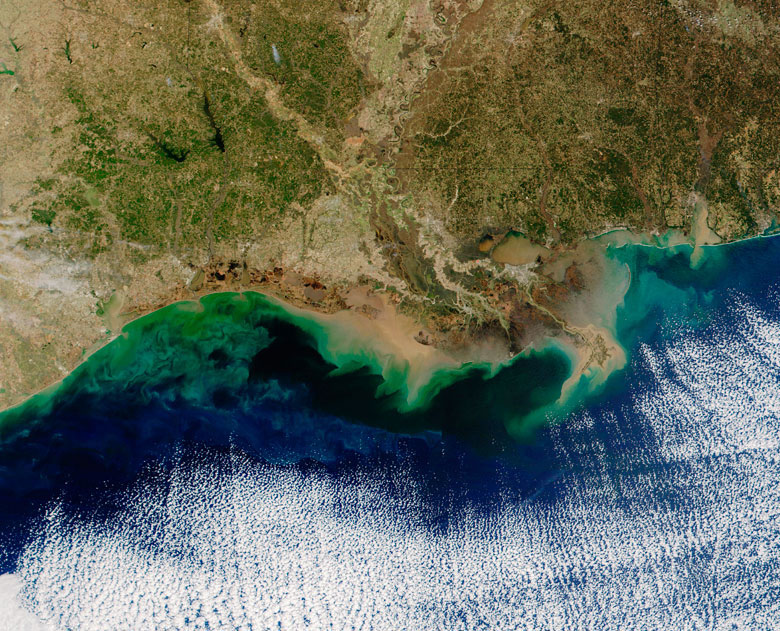Dead Zone Down: Thank You Drought For Something!

The drought that is parching the Midwest is allowing the Gulf of Mexico to take a breath of fresh air.
This year, the "dead-zone," a patch of oxygen-starved water at the mouth of the Mississippi River, is the fourth smallest ever recorded by the National Oceanic and Atmospheric Administration (NOAA). The dead-zone is still larger than Delaware at 2,889 square miles (7482 square km).
"The smaller area was expected because of drought conditions and the fact that nutrient output into the Gulf this spring approached near the 80-year record low," said Nancy Rabalais, executive director of the Louisiana Universities Marine Consortium who led the survey cruise in a press release.
Dry conditions on land lead to a smaller dead-zone because less nutrient-rich river water is washed out to sea during a drought. The Mississippi and its tributaries pick up tons of eroded soil, fertilizers, animal and human wastes and other substances as it flows through the American heartland.
Algae in the Gulf of Mexico feast upon that flow of foodstuffs and become massive blooms. But the lifespan of the phytoplankton is pretty short and soon the dead plantlife is quickly consumed by bacteria that suck the oxygen out of the water, leaving none for fish and other aquatic life.
The lack of rains and flooding this year has made the Mississippi less than mighty. The river is giving the algae less food, which leaves more air for the fish. Hence, as the drought withers this year's corn crop, the low-flow of the river may help the fish harvest.
ANALYSIS: Dude, Where's My Corn?
Although small, this year’s dead-zone is still massive compared to the smallest ever recorded in 1988, which was only 15 square miles (39 sq.km). The largest recorded dead-zone was 8,400 square miles (21,755 sq. km) in 2002.
PHOTOS: Flood Waters Along the Mississippi River
IMAGE:
The teal blue area along the Louisiana coastline illustrates a region known as the Dead Zone, an expanse of oxygen-depleted (hypoxic) waters resulting from the delivery of excessive amounts of nitrogen pollution from the Mississippi River. Human activity is largely responsible for the seasonal hypoxia, which now threatens not only the marine ecosystems, but also the livelihoods of those people who rely upon it. (NASA/Corbis)
Article originally published at Discovery News
Image credit: NASA/Corbis